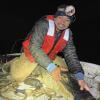Hello everyone! I'm Akio, and I'm new to this group.
I'd love to start a discussion about GPS trackers for wildlife. As the developer of Loko—an open-source, offline GPS tracker—I’m eager to learn from your experiences in the field. What types of devices do you use? What are their advantages and disadvantages? What challenges do you face?
Your feedback and insights would be incredibly valuable in helping me improve Loko. Looking forward to your thoughts!
Cheers,)
1 March 2025 12:09am
As discussion points, the following are some ideas I've been investigating and hoping to find solutions for for my specific scenario - tracking large animals in large areas in Africa with very limiting funding and resource:
For wildlife, durability and reliability is key - it must be able to endure anything nature can throw at it for years - preferably 2 years+ in my scenarios... For large rollouts, cost is most often the deciding factor - most conservation entities don't have much money and budgets are stretched...
Communications must be reliable but secure - especially for tracking TOPS (Threatened Or Proctected Species) animals. Location info should only be accessible to authorized devices/users. Encryption should not be optional...
Location update frequency depends on tracking needs - e.g. for security tracking more frequent updates are needed (think seconds or minutes) than for simple "where are they" studies (once or twice a day at most). LoRa or Bluetooth Low Energy needs to be standardized. Batch update functionality (i.e. where location info is tracked more frequently and stored locally until a secure connection is made and several records are then sent) would expand possiblilities - e.g. only install "readers" in key locations (e.g. at waterholes) and when animals get in range data is downloaded and distributed - making rollout cheaper since the whole area doesnt have to be covered by "readers".
Not specific to the tracking device, but the device receiving the communication should be robust, and not require any connectivity since in most conservation areas in Africa mobile/cell reception or wifi is absent, or cost prohibitive. Offline maps are key - especially ability to use geotiff or other local maps, and not just offline Google or OSM maps. Researchers often use unpublished maps with proprietary data that cannot be exposed to Google or OSM.
The Loko device seems good, but for wildlife tracking size and durability might have to be approved. And if the app can display custom geotiff or similar maps, and show multiple devices at the same time it could be really useful for a much larger audience.

Herdhanu Jayanto
KONKLUSI (Kolaborasi Inklusi Konservasi - Yayasan)
1 March 2025 4:42am
Hi Akio! I wanted to share our experience.
We are tracking crocodiles in peat swamp forest, so far we tracked 8 crocodiles. We use product from ATS - GPS/VHF with iridium transmitter. We put the tag on the nuchal of crocs. Challenge for tracking the crocodiles and make it sustainable:
- For now they don't have release mechanism (so we need to catch them again)
- one GPS cost at least $25 per month for Iridium subscription (for Indonesia this is quite expensive!). Oh but ATS provide 1-year free subscription
- Initial cost is expensive of course, the durability of this product is quite good itself. The battery might last 1-2 years depending on the setting.
- The GPS point and satellite transmission sometimes not consistent
- more sensors like accelerometer and data logger would be great, but keep it affordable
I feel like this is asking everything at once, but that is what we faced, especially when resource are super limited in Indonesia compared to global north. Hope this help!








HeinrichS